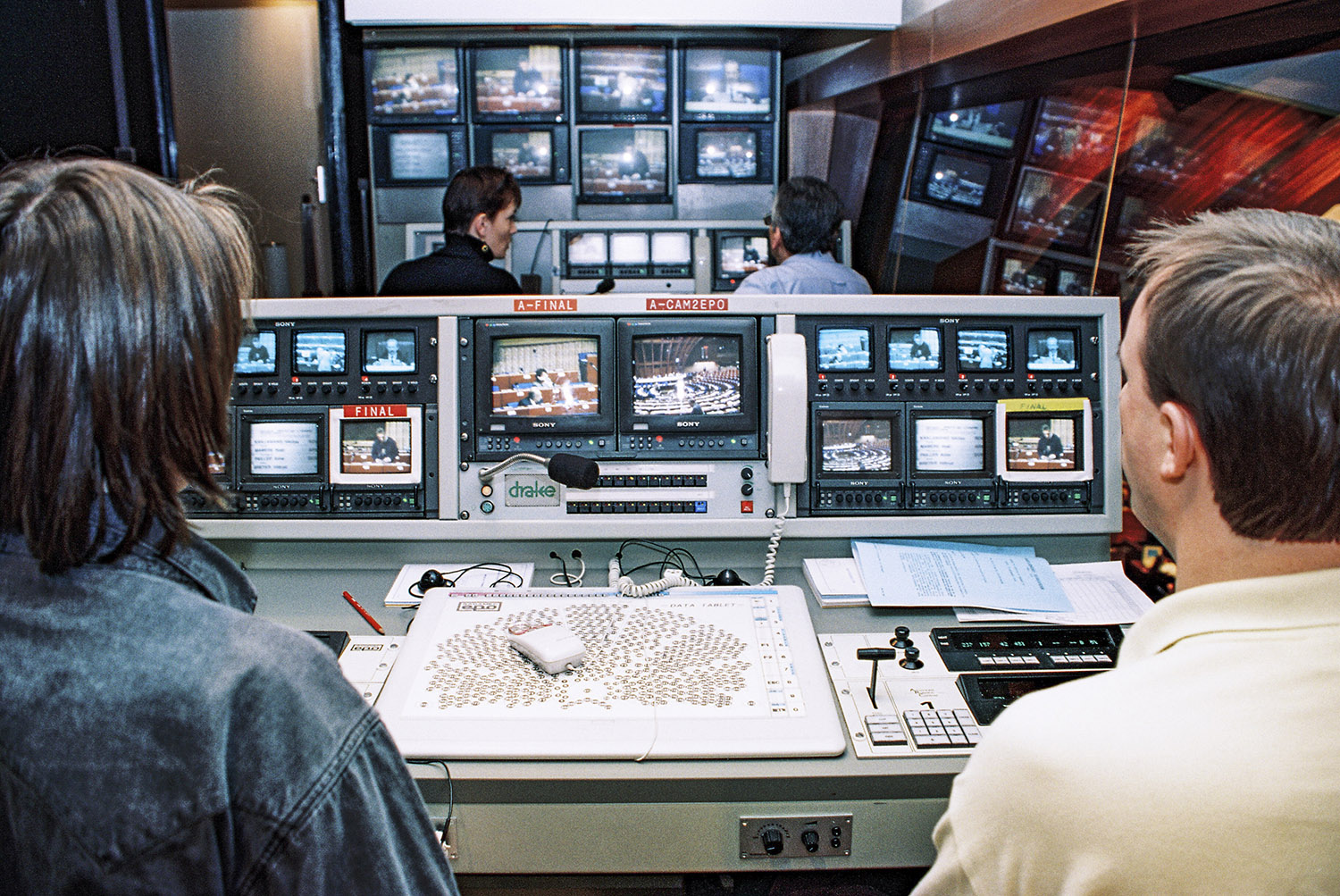

Pol Esteve
Architect, Researcher and Teacher
Architectural Association (AA)
Dennis Pohl
Research Associate
Karlsruhe Institute of Technology (KIT)
The digital era has deeply impacted on the forms of political debate. For Europe, this became most evident around the time of the Brexit referendum in 2016, when quantifiable media were instrumentalized to manipulate public opinion. Facing the threat for the European integrity, the European Parliament adapted its architecture and its media politics to make its voice heard in social media. For this purpose, a temporary TV-set was erected inside the European Parliament, anticipating the public debate generated around the Brexit referendum. Advanced broadcasting equipment was used to transmit live and interactive political discussions held by independent journalists, analysts, specialists and parliamentarians themselves. This media-spatial solution that was created to engage a wider public into European politics, brought a paradigmatic change in parliamentary culture still to be fully explored and exploited.
In contrast to national politics, where the debate is increasingly displaced outside of the parliament into personal social media accounts of popular politicians, in the EU Parliament, MEP’s often lack a relevant individual presence on digital platforms to generate debate and public engagement. Thus, the new TV-set along with institutional social networks profiles offered a framework for the MEP’s to address a European public. It was a digital agora to produce political discourse beyond the rigid broadcasting format of plenary sessions. Participatory politics were enacted by Facebook Live discussions with politicians and televised debates, in order to create a stream of content that could be purposefully used to distribute an institutional narrative, countering potential threats of external manipulation—namely by Cambridge Analytica—and the often criticized technocratic image of EU institutions.
The improvised development of a participatory social media architecture contrasts with the Parliament’s pioneering history in the use of communication media. Being the worldwide forerunner among parliaments that broadcast their plenary sessions, the European Parliament has a history within and beyond media networks that constitute European democracy. After mass democracy and television had built an intimate relation in the second half of the twentieth century, television was instrumental for the European Parliament to address a new collective identity of European citizens during the first European elections in 1979. To televise European parliamentary democracy, the institution incorporated TV equipment into the plenary hall and implemented media policies that covered pan-European television programs, satellite transmission standards, and television studios.
In 2016, the new TV-set marked a shift from the passive televiewer-electorate towards interactive interfaces between the institution and citizenship that ultimately addressed a newly constituted user-electorate. It also revealed the need for more representative broadcasting spaces in addition to the plenary hall—until that moment, only humble TV studios situated in an adjacent building were in use. Located in the central axis of the parliament and with views over the main central hall, the TV-set rivaled with the hemicycle in its position and political status.
The efforts made by the parliament to institutionally occupy the space of debate in social media, brought rather discrete results. However, this paper aims to point out the potentiality of a further digital engagement if, instead of being anecdotally used to in one specific set, it is widely applied to give access to the decision making process ‘behind the scene’ of the plenary hall. Beyond the hemicycle and the TV-set, the European Parliament building consists of uncountable meeting rooms of different sizes, where working groups, experts and representatives prepare campaigns and inform policies off the record. Usually, these informative debates do not reach the public because architecture acts as a filter mechanism; discussions are concealed in secondary meeting rooms with no media connections and only opened up to the public once they reach the hemicycle. The implementation of extensive broadcasting infrastructure and the use of digital platforms could cover the “real” political debates to share with a wider public—audiences might engage stronger in discussions on topics relevant to their field of interest. Hence, this could actively rearrange how architecture as medium of politics influences the politics of media.
This paper draws on archival findings and on-site research conducted through a series of workshops in the city of Brussels between 2016 and 2019.